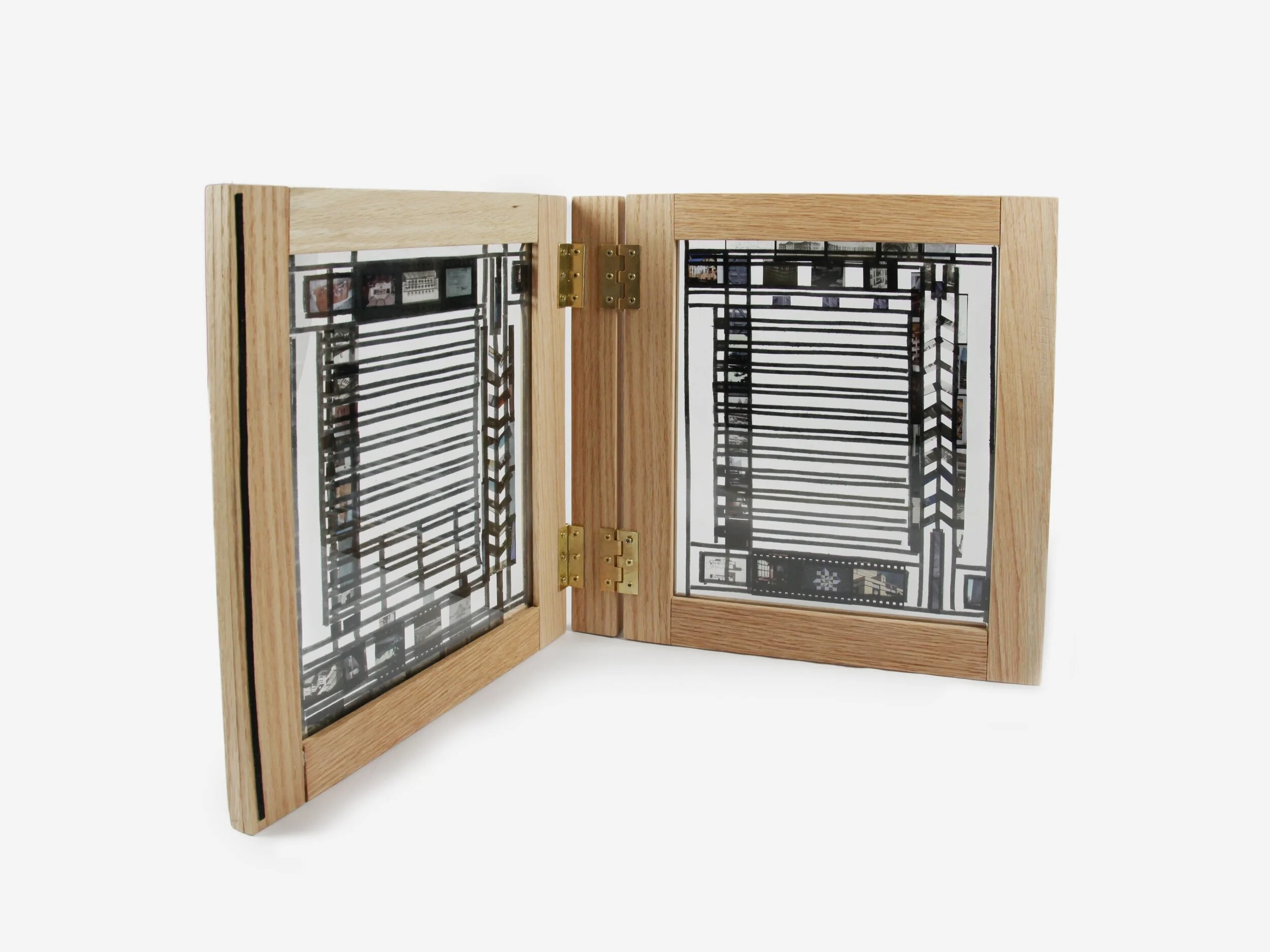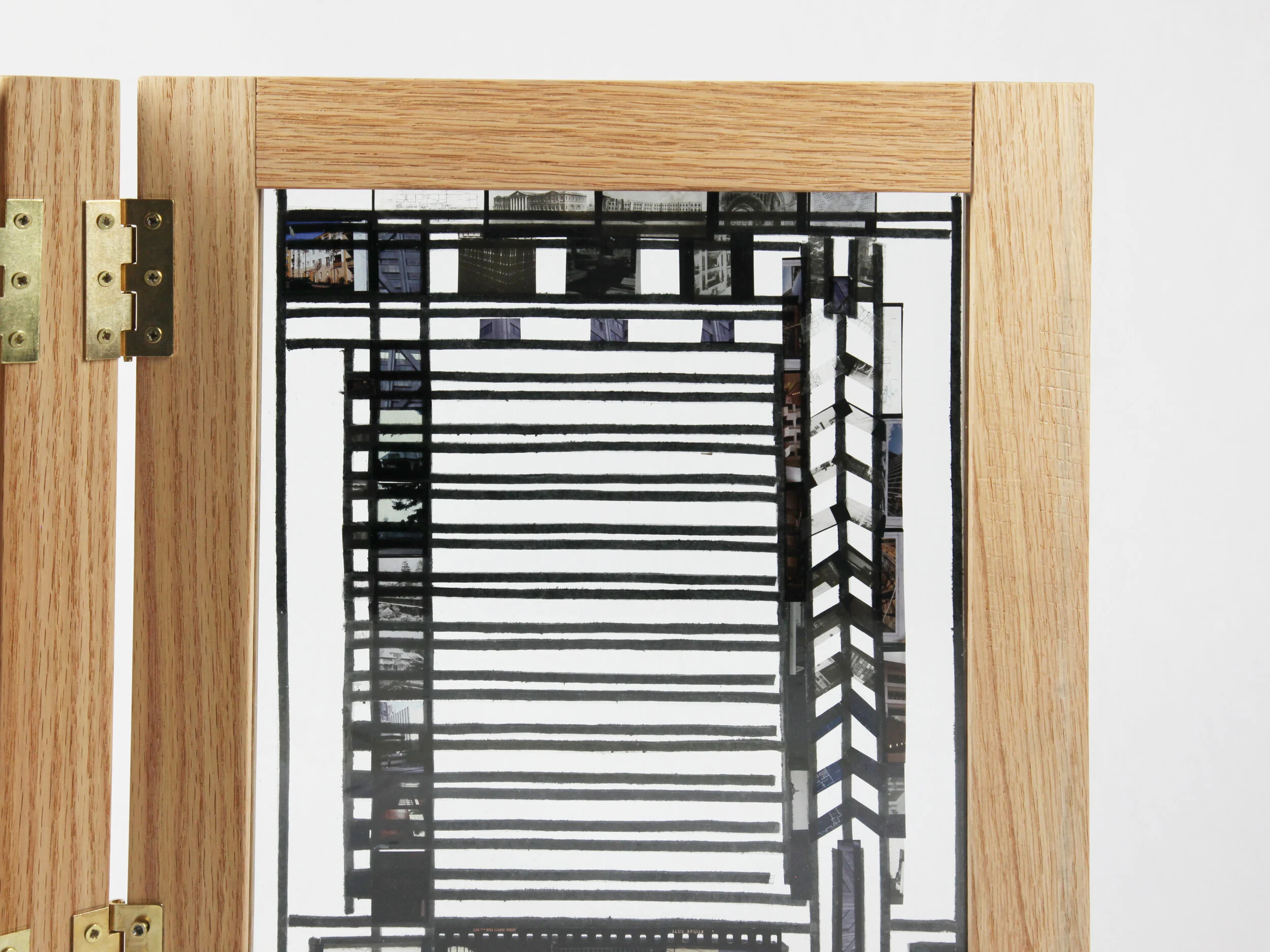Is it a window that the reader is opening up or a book?
It is both.
After giving the readers the experience of “opening up,” a journey through Wright’s life of design is laid wide open before them. The book “My Dear Mr. Martin” points out how this set of stained-glass windows came to be as a designed object. While the bookcase provides a “hands-on” experience of the artifact that is hanging on the museum’s wall, the readers are giving the chance to closely “read” the object.
A detail worth mentioning on this bookcase, other than its complete mimicry of the real window in size, design, and material, is that the colored glass is replaced by the color films of architectures that have influenced Wright’s design (as mentioned in the book.) They are the backstory and the true backbones of these windows.
“MY DEAR MR.MARTIN”
"My Dear Mr. Martin" is a two-part project celebrating Frank Lloyd Wright's design theories, and specifically, the stained-glass windows. The book with the same title leads the reader down the path of Wright's life of design. Together with its bookcase, the project understands, analyzes, communicates, and reflects upon Wright's design in both written and unwritten manners.
This is an individual project completed in 2020.
Book Word Count: 2366 words
Bookcase Dimensions: W 64 cm (25’’) x H 41 cm (16’’)
Media: Oak, Glass, Color Film, Metal
One can argue that Frank Lloyd Wright’s stained glass window itself is able to represent his theory as a whole. The windows are Wright’s design history book waiting to be opened up. Upon seeing this well-designed piece in the RISD Museum, I was excited to learn more about its back story. The short book “My Dear Mr. Martin” was thus created.
To present the book to the readers, a handmade hardwood and glass bookcase, mimicking the actual window in real-size, comes along, enhancing the reading experience with an unwritten method.









